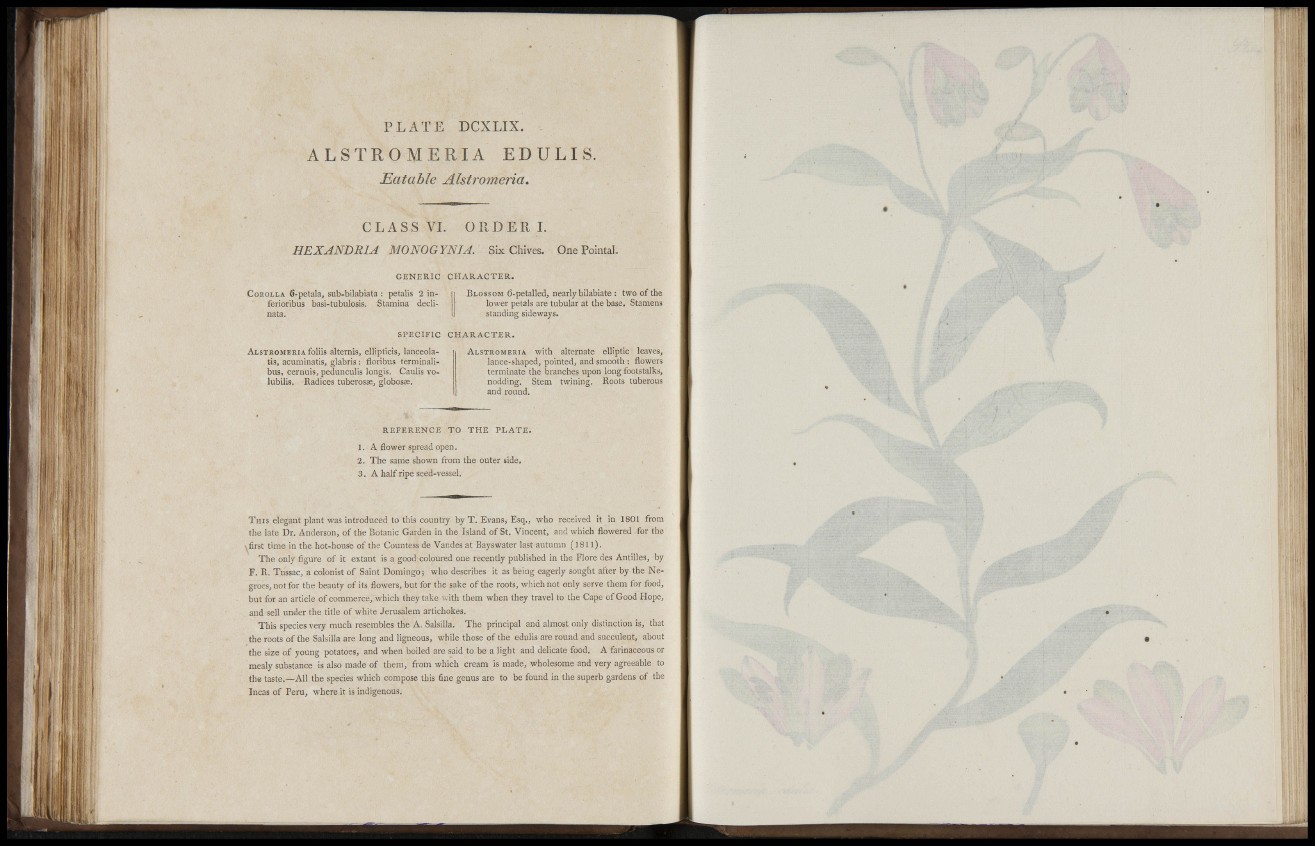
l-ii
P L A T E DCXLIX.
A L S T R O M E R I A EDULIS.
JEatable Alstromeria.
C L A S S VI. O R D E R I.
HEXANDRIA MONOGYNIA. Six Chives. One Pointai.
GENERIC CHARACTER.
COROLLA 6-petala, sub-bilabiata : petalis 2 inferioribus
basi-tubulosis. Stamina declinata.
BLOSSOM (5-petalled, nearly bilabiate : two of the
lower petals are tubular at the base. Stamens
standing sideways.
SPECIFIC CHARACTER.
ALSTROMEEIA foliis alternis, ellipticis, lanceolatis,
acuminatis, glabris : floribus terminalibus,
cernuis, pedunculis longis. Caulis volubilis,
Radices tuberosae, globos£e.
ALSTROMERIA with alternate elliptic leaves,
lance-shaped, pointed, and smooth : flowers
terminate the branches upon long footstalks,
nodding. Stem twining. Roots tuberous
and round.
REFERENCE TO THE PLATE.
1. - A flower spread open.
2. The same shown from the outer side.
3. A half ripe seed-vessel.
THIS elegant plant was introduced to this country by T . Evans, Esq., who received it in 1801 from
the late Dr. Anderson, of the Botanic Garden in the Island of St. Vincent, and which flowered for the
^first time in the hot-house of the Countess de Vandes at Bayswater last autumn (1811).
The only tigure of it extant is a good coloured one recently published in the Flore des Antilles, by
F. R. TussaCj a colonist of Saint Domingo; who describes it as being eagerly sought after by the Negroes,
not for the beauty of its flowers, but for the sake of the roots, which not only serve them for food,
but for an article of commerce, which they take with them when they travel to the Cape of Good Hope,
and sell under the title of white Jerusalem artichokes.
This species very much resembles the A. Salsilla. The principal and almost only distinction is, that
the roots of the Salsilla are long and ligneous, while those of the edulis are round and succulent, about
the size of young potatoes, and when boiled are said to be a light and delicate food. A farinaceous or
mealy substance is also made of them, from which cream is made, wholesome and very agreeable to
the taste.—All the species which compose this fine genus are to be found in the superb gardens of the
Incas of Peru, where it is indigenous.
R / - - - - HI''
I : 1]
H- • - Ej'
lit
pi
i I
i, -s;'
- f
Hi-
, ; li'l 11''
ir
I
iil...